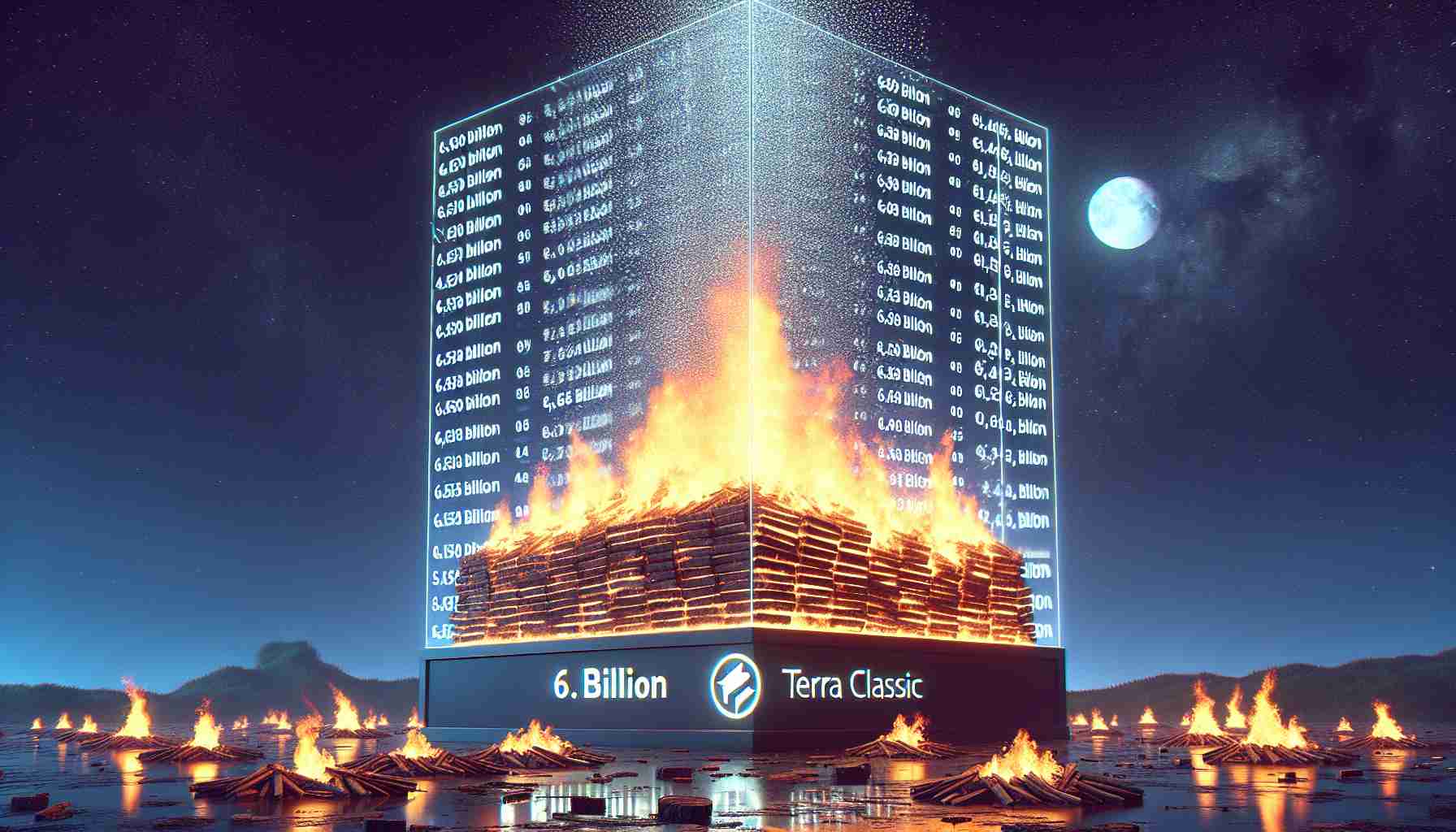In the cryptocurrency ecosystem, Terra Luna Classic (LUNC) has ignited significant interest due to the recent token burn that has exceeded 6.5 billion LUNC. This substantial burn was influenced by hefty transactions from sizable wallets and trading activity on crypto exchanges, prompting a noteworthy contraction in the token’s total and circulating supply.
Within the span of 24 hours, an uptick in Terra Classic LUNC tokens burned was observed, with the total incinerated by the community surpassing a staggering 123 billion LUNC. Concurrently, the specific action of these large-scale wallet owners, combined with the company’s strategic moves, has led to a surge in the inflow of LUNC into the community’s reserves.
Dynamics in the trading realm of LUNC revealed a sharp 600% boost in trading volumes, a direct reflection of the active participation of traders and investors. This market fervor responded to the announcement by Terraform Labs CEO Chris Amani that the TFL and LFG-held LUNC and USTC tokens were slated for incineration. Furthermore, Amani showed resolve in endorsing the idea of blacklisting and burning wallets possessed by the Terra Classic community under certain conditions.
However, the recent developments surrounding the burning spree did not shield the cryptocurrencies from market forces, as LUNC and USTC prices fell by 19% and 7%, respectively. These price adjustments highlight the volatile nature of the cryptocurrency market, even amidst efforts to influence token economics through supply reduction measures.
The token burn for Terra Luna Classic (LUNC) aims to address issues stemming from the historic crash of the original Terra (LUNA, now referred to as Terra Classic LUNC, and its stablecoin TerraUSD (UST, now USTC)) ecosystem in May 2022. This crash resulted in significant losses for investors and a loss of trust in the platform.
Key questions and answers associated with Terra Classic’s token burn:
– What is the purpose of the LUNC token burn?
The burn is intended to reduce the token’s supply dramatically in response to the hyperinflation that occurred after the collapse of the Terra ecosystem. By decreasing the supply, the initiative seeks to restore value to the remaining tokens and regain investor confidence.
– How does the token burn mechanism work?
The burning mechanism involves sending tokens to a designated wallet address that is inaccessible, effectively removing them from circulation forever. This can be achieved actively through community initiatives or through protocols embedded in blockchain transactions, where a percentage of the transaction value is burned.
– What are the main challenges or controversies?
The main challenges include regaining trust from investors after the collapse and ensuring the stability and utility of the remaining Terra Classic tokens. Controversies may arise from the decision-making process regarding which wallets to burn and how these decisions align with the decentralized ethos of cryptocurrency.
Advantages and disadvantages of token burning:
– Advantages:
– Reducing the token supply can increase scarcity and potentially drive up the value of the remaining tokens.
– Token burning can be seen as a commitment by the developers to improve the token’s economics.
– It can help mitigate the effects of prior inflation or oversupply.
– Disadvantages:
– The burn alone may not be sufficient to restore confidence in the ecosystem if underlying issues are not addressed.
– The burning of large amounts is speculative and does not guarantee price recovery.
– It might cause dissent within the community, especially if not all stakeholders agree with the burning strategy.
For those interested in following the developments of Terra Luna Classic (LUNC), or learning more about the cryptocurrency and its ecosystem, you can visit the main website of Terra by following this link: Terra.money. Please note that due to the fast-moving nature of the cryptocurrency market, it is essential to do your own research and consider current information while evaluating the effectiveness and risks associated with token burning strategies.



